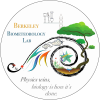Reports
Contents
| Title: | BA NDVI Comparison 2017 | ||||||||||||||||||||||
| Date: | 2019-05-29 | ||||||||||||||||||||||
| Data File: | NDVI_FS_Hemi_midday30min.csv NDVI_FS_Hemi_middayavg.csv |
||||||||||||||||||||||
| Refers to: | BA, sn 943203017, sn 882103021 | ||||||||||||||||||||||
|
BA has NDVI information from a pair of Decagon Spectral Reflectrance Sensors (SRS), one pointing up to measure incoming radiation and one pointing down to measure outgoing radiation. Each sensor measures two wavebands (WB1 = 650 nm/red; WB2 = 810 nm/NIR). The tower was initially set up with a field-stop (FS, 36 degree of view) NDVI sensor in the outgoing position, and later we added a hemispherical (Hemi, 180 degree of view) to compare the two. The two sensors overlapped for 4 months.
I averaged the mid-day values (11:30 through 13:30) for each waveband, and used the mid-day averages to calculate a daily mid-day NDVI. NDVI = (NIR-Red)/(NIR+Red) Figure 1. Time series of the red band (650 nm) reflectance. Reflectance increases throughout the growing season. The field was mowed on 2017-04-24 and 2017-05-27, when reflectance from both the field-stop and hemispherical sensors slightly increased.
Figure 3. Regression of red band reflectance between field-stop and hemispherical sensors. Poor relationship because of narrow range of field-stop sensor (0.001-0.033). Figure 2. Time series of the NIR band (810 nm) reflectance. Decreases apparent when field was mowed on 2017-04-24 and 2017-05-27.
Figure 4. Regression of NIR band reflectance between field-stop and hemispherical sensors. Relatively tight relationship compared to the red bands. Figure 5. Time series of NDVI (midday average). Clear drops when field was mowed 2017-04-24 and 2017-05-27. NDVI seems to recover after 2 weeks, even though they usually wait 4 weeks to mow. The field-stop sensor reports higher NDVI than the hemispherical sensor.
Figure 6. Regression of NDVI (midday average). Relatively tight fit. We could use this equation to convert field-stop NDVI to hemispherical NDVI, so that the NDVI value is consistent throughout BA's lifetime.
Figure 7. Regression of NDVI (using 30-min data 10:00-14:00). Similar equation as the regression using daily average of midday NDVI. Figure 8. Checking the corrected field-stop NDVI--peak NDVI was just a little bit lower (0.03) than the measured hemispherical NDVI during the 4-month period both sensors, but overall compares well. There is not much difference between using midday averages or 30-minute data in the linear regressions. Recommendation: Use equation from Fig. 6 to convert field-stop NDVI (x) from 2016-08-12 to 2017-06-05 so it's comparable with hemispherical NDVI (y).
 |
|||||||||||||||||||||||
| |

